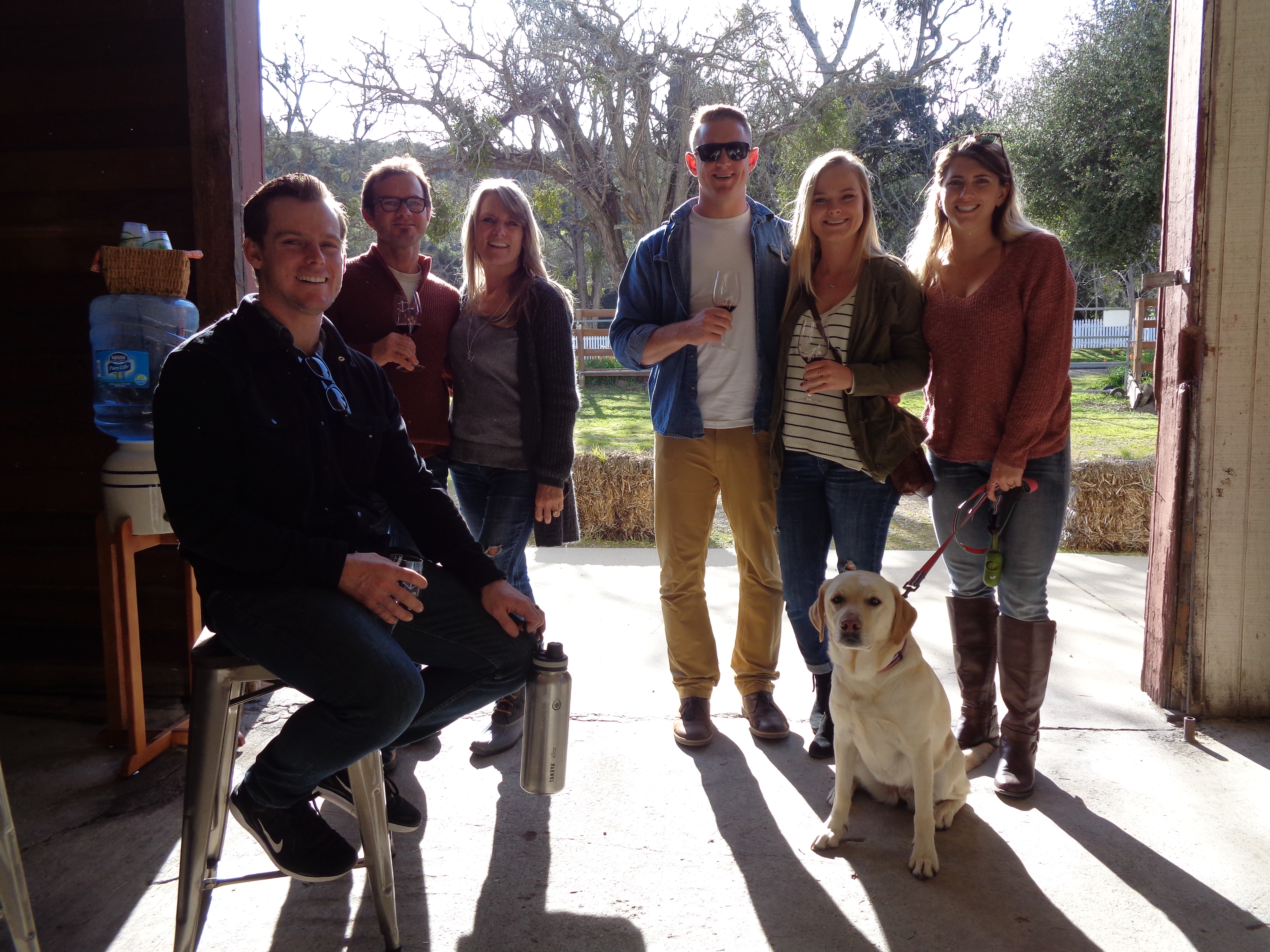ORIGIN STORIES w/BILLY & DICK

DICK: I met Billy about 45 years ago at a party he was throwing with a mutual friend. He’d just gotten out of Cal Poly and he was up at Mesa Vineyard, which is now part of the Cambria Winery.
BILLY: I see this VW van come rolling down my driveway and park and the sliding door opens and all this smoke comes pouring out!
DICK: Billy and I partied and the following morning I went to work for him driving a tractor – which of course I said I could do but had never done. I had just gotten back from Europe with the family and didn’t have a job. I remember the first day of work, I arrived at the door and was greeted with a cup of Columbian coffee and a joint of Columbian pot!
B: I came down in 1975, moved into a house in Tepusquet Canyon and started farming the 220 acres of vines at Mesa. I was introduced to a lot of the locals by the vineyard manager of Bien Nacido at the time, Jim Bellich, who is still a dear friend of ours. Those vines were planted in ’72 and FOXEN is still getting fruit from those old vines. I was there till ’78 when I went to work for Chalone. I came back in ’81 and moved back into the Tepusquet house.

D: So we decided to start making wine together when Bill got back from Chalone. It took us four years to sort of get our act together. We pressed our first crush up on the basketball court I had put in up the hill here. I lived here on the property for 33 years and had put in a basketball court. Billy bought some old American oak barrels and sterilized them with bleach and citric acid. I think we had four barrels that first year. Did we buy that Italian stemmer/crusher that year?
B: Yeah. It was really dangerous!
D: Very dangerous. So, we borrowed a press from Harold Pfeiffer at Rancho Sisquoc and pressed on the back of our pickup truck on the basketball court. We had our four barrels up there and had to get them down here to the Shack, which was going to be our barrel room. So, we sort of made a railroad track with railroad ties to get the barrels into our pickup truck and brought them down here and did the same thing. A barrel weighs about 600 pounds, so we were praying that the bungs wouldn’t pop out!
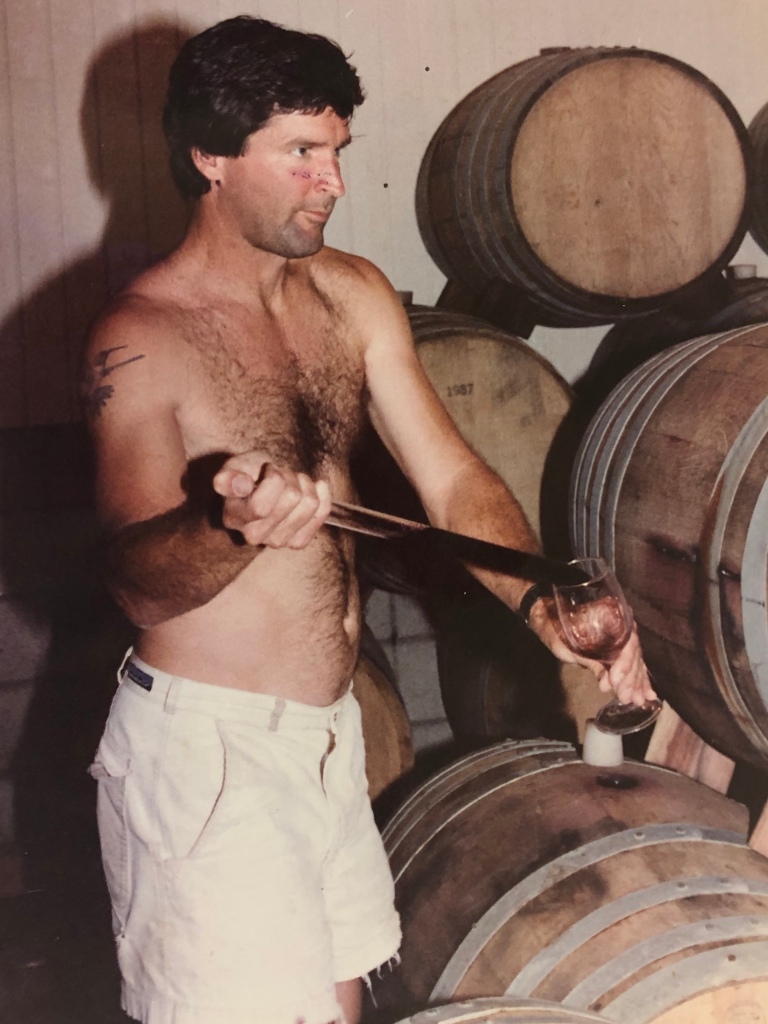
D: In 1985, the original Shack was in complete disrepair. We fixed the doors, we fixed the roof – sort of! We poured a concrete slab behind it, which was our crush pad for the first ten years. Eventually, we took over the barn as our barrel room.
B: One room was the whites, another was the Pinots, the main room was the Bordeauxs and the Rhones were down below.
D: Until one year when we made too many Rhones and had to take over the tractor shed. We had barrels here, there and everywhere. It was insane!
B: In ’87 we did our first Chenin Blanc, Chardonnay and Pinot Noir. We had twelve barrels by then.

D: We sort of opened up the tasting room – we had the FOXEN OPEN sign. We were totally illegal, so we put out the sign on the weekend and pretended we didn’t exist during the week.
B: Dick worked Saturday and I worked Sunday. But, Dick would work from his front porch!
D: Our first customers were a carload of girls who came in and said, “Hey, your wine’s pretty good! How much is it?” and I said twelve bucks a bottle and they said, “That’s too much!” and walked out.
B: There was always cold beer in the fridge and always a football game on the black and white TV. That went on till ’89 or ’90. One Sunday, a limo came in at 4:00, everyone completely sh*tfaced and I decided I was fed up with dealing with the public and told Dick “I quit!” He said “Well then, I quit too!”
D: That’s when we hired our first employee, Sandy Kleck, a bartender at the Hitching Post. She was the inspiration for the Virginia Madsen character in Sideways.

B: We started making more wine at a certain point and decided we wanted to buy some new French oak barrels.
D: French oak was expensive – around five hundred bucks a barrel. So, we came up with the Barrel Subscriber program. We called up a bunch of our friends and offered them a case of wine and a dinner party every year if they’d buy the barrel for us. They’d decorate them with cartoons and what not.
B: The barrel subscriber dinners became notorious. We had pumpkins and gourds with flower arrangements on the tables as centerpieces and at the culmination of the dinner, we’d always have a centerpiece toss. It became very competitive. One year, a bus full of German tourists happened upon one of our dinners and joined in the toss! It was off the wall!
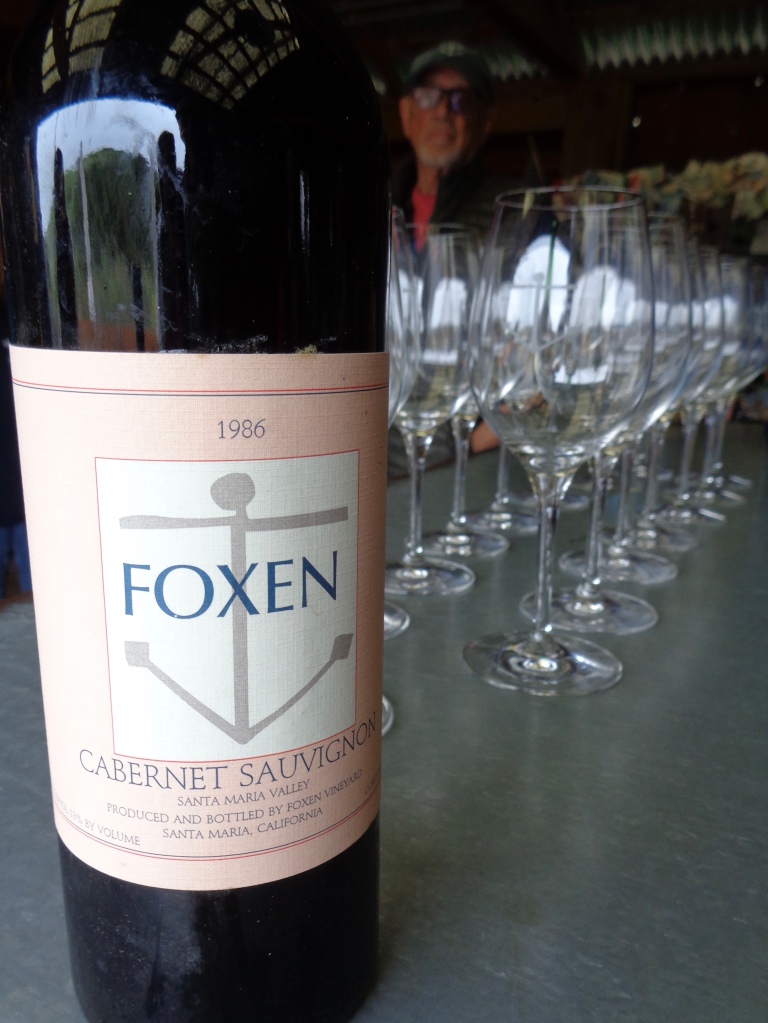
D: We poured this 1986 Cabernet Sauvignon at the second Santa Barbara Vintner’s Festival ever, which was held at Flag Is Up Farms in Solvang.
B: Still holds up! Cheers!
A tour of the WICKENDEN HOUSE with DICK!

“The story goes… an English engineer named Frederick Wickenden happened to travel to South America in 1845 to help build a railroad from Bolivia to the Pacific Ocean. While he was there, gold was discovered in California, so everybody that had the chance wanted to come to up here to make it rich. He took whatever little money he had and went North to Sacramento and from there went up to the gold country. Apparently, that year they had a tremendous rainfall and his sluicing equipment was washed to the sea. He lost all of his money and became an itinerant person wandering the coast of California. As luck would have it, he went to a dance in San Luis Obispo and there met my great-grandmother, Ramona. They fell in love, were soon married and moved up here to the ranch.

They built an adobe home and Frederick decided to try his hand at being a sheepherder. By 1875, he had raised a large flock of sheep. He actually drove three thousand sheep from the ranch to Monterey and sold them, took the money and went over to Redwood City and purchased a shipload of redwood. He brought it all by ship to Avila Beach, floated it to shore and then brought it here by horse and buggy. With that wood he built this house, the barn, the shack and the little church at the bottom of canyon (the San Ramon Chapel). Those were the first wood buildings in Northern Santa Barbara County – prior to that, everything was built with adobe. This whole house – the wooden structure – was built around two adobe rooms with ten-inch thick walls.”
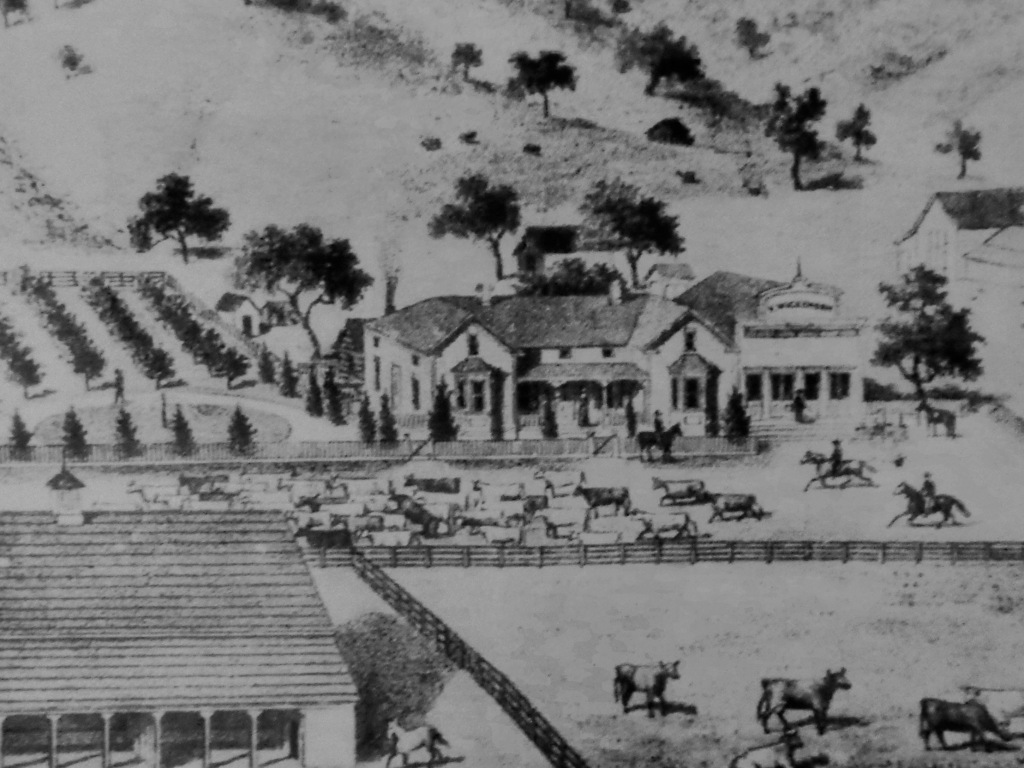

“In the 1880’s, next to this house used to be the first general store and post office in Northern Santa Barbara County. Every day a stagecoach would come from Guadalupe on the way to Santa Barbara and the first stop was here – Santa Maria didn’t exist. If there weren’t any passengers to pick up, they would run the horses around in a loop and throw the mail up to the stagecoach so the horses wouldn’t cool down.

They would then head up to Mattie’s Tavern in Los Olivos for lunch. After lunch, they would head up the pass and stop at Cold Springs Tavern, where they would put another team of horses behind the stagecoach – so the coach wouldn’t ride on the horses that were in front of it. It was a full day trip and it was the Old West: there were robberies! You had Joaquín Murrieta the Bandit! The Cisco Kid! It was amazing!”

“This was one of the two original adobe rooms. This fireplace has a bar that goes across the top, which was put in to keep bears and other animals from coming in. When I was a kid, I was worried that Santa Claus wouldn’t be able to come down the chimney because of it.”


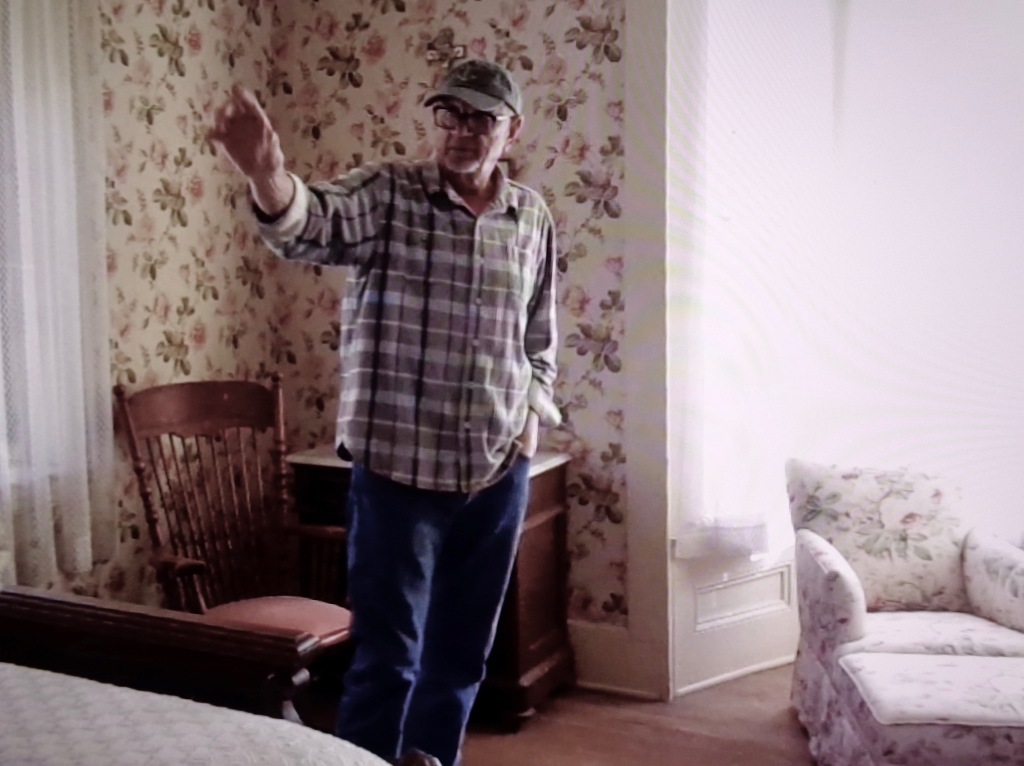
“My grandmother’s name was Flora and she loved flowers. When this house was refurbished in 1948, when everything was modernized, electricity was brought in, toilets brought inside, etc. – she put up flower-patterned wallpaper everywhere. This was her room and has a bedroom set that came around Cape Horn with my great-great grandfather, William Benjamin Foxen, in 1810. This was sort of the sanctorum of the house.”


“These are my great-great grandparents Eduarda and William Benjamin Foxen. Foxen was a horseman. All of the first horses that pulled the first trolleys in San Francisco had the anchor brand on them. His son-in-law, Frederick Wickenden was a sheepherder. My grandfather, John Richard Wickenden (also known as Dick and the first Dick in the family) was a cattle man. He raised about five hundred cattle a year here on the ranch and was very successful.”


“Back in the olden days, they always separated the kitchen from the rest of the house in case there was a fire. When they remodeled in 1948, they joined the kitchen to the rest of the house. When I was a kid growing up here, we had a wood-burning stove where my grandfather used to cook us refried beans and salsa for breakfast every morning. This was one of our gathering places.”

“I originally planted this vineyard in the early ‘80s and named it MaMère (which means my mother in French) after my mother, Margery Doré. When Billy and I teamed up we sort of remodeled it and then about five years ago we redid it again because the deer and the drought had taken their toll. When we replanted it, we did it Bordeaux-style with the vines very close to the ground with close rows. In the old country, they plant them that way to keep the residual heat in the ground overnight as a natural frost protector.”
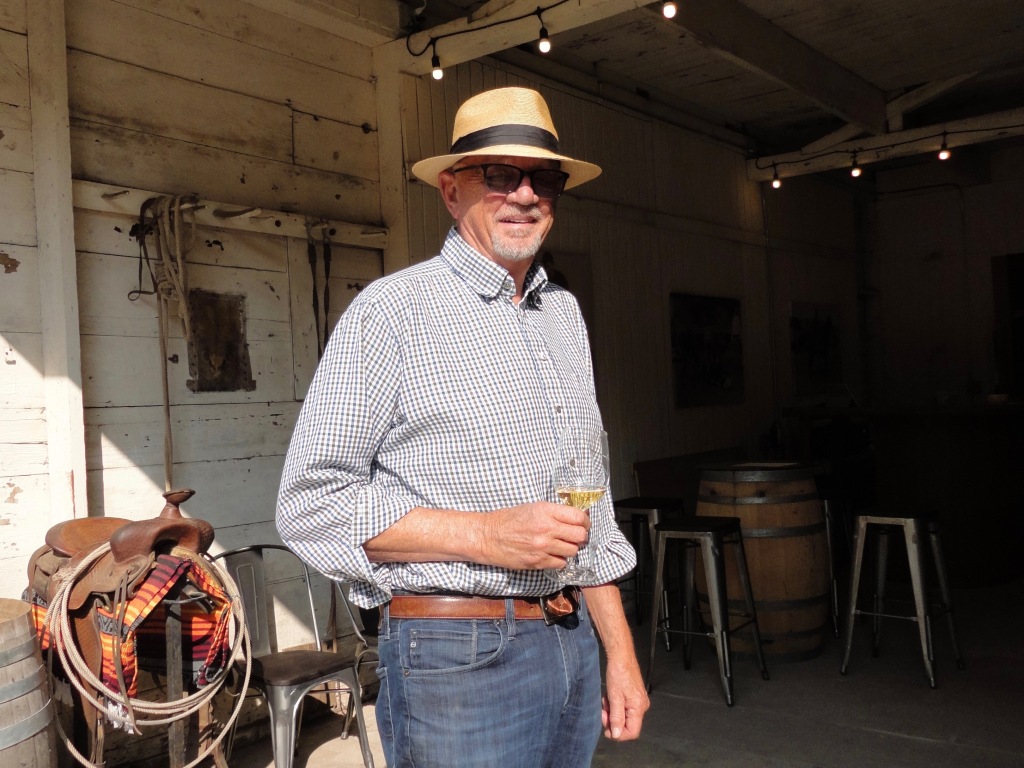
“Hope you enjoyed the tour! Lots of history in this house!” – Dick
2019 HARVEST Q & A WITH BILLY!

FOXEN OWNER BILLY WATHEN ON THE 2019 HARVEST:
Q: So, last day of harvesting grapes was Friday…. what comes next in the process?
A: Just babysitting at this point. If you look at the board here of our fermentation tanks, you can see that there’s no Pinot Noir anywhere…. It was probably a month’s worth of Pinot and these were pretty much all full. Then at the end of that month-long period, we did the de-juicing and press-offs as we started filling with Rhones and Bordeauxs, etc. Now we’re back to almost full capacity and today we’ll start doing the same process with these. The biggest thing about now that we’ve just finished harvesting is it takes all of the brain pressure off of having to follow those vineyards and varietals and make those picking decisions. That’s the hardest thing in the course of a vintage is to make those calls.

Q: Are those decisions yours?
A: They are, but I’ve been doing that with my troops so they can learn how to do it in the future. Knowing where all our fruit is coming from and the sequential effect of everything we do. You have to know where everything is and when it’s going to ripen and historically when it’s ripened. So, it’s pretty complicated and stuff that you lay awake at night worrying about. Now we don’t have to worry anymore – just babysit.
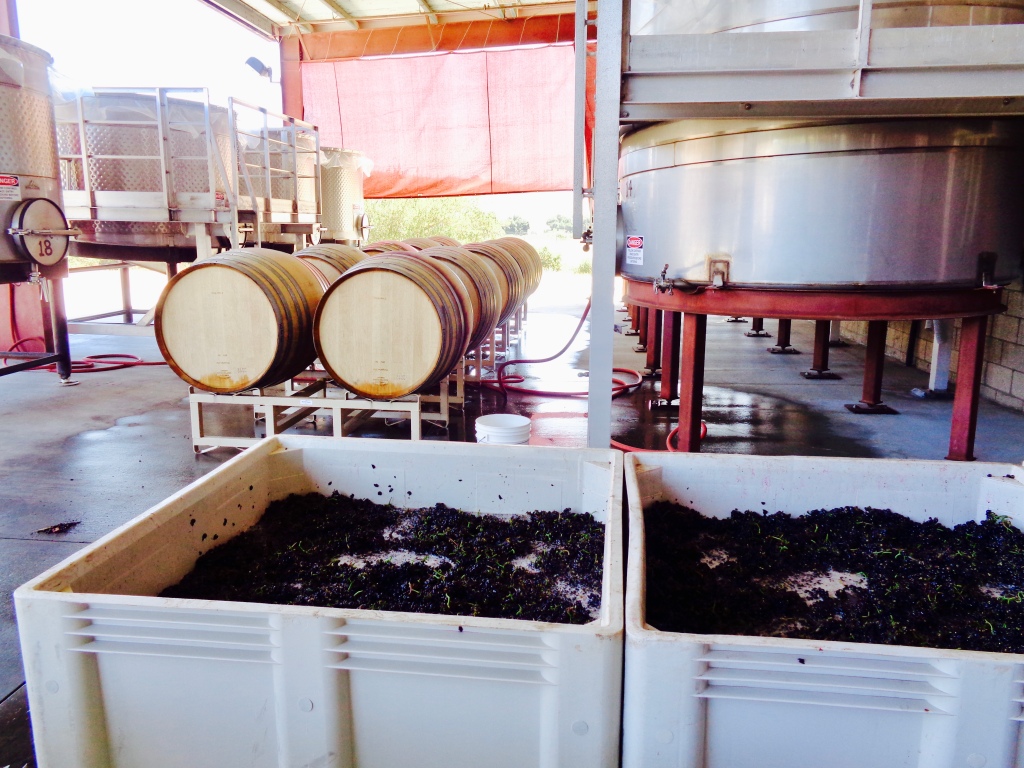
Q: How did this year stack up against previous ones?
A: This has been a vintage where everything has been outrageous! It never got too hot for too long – it’d be a few days and then it would cool off. We had a little scare with cold but it never got too cold. So, it’s been good in that respect – we never had to panic.
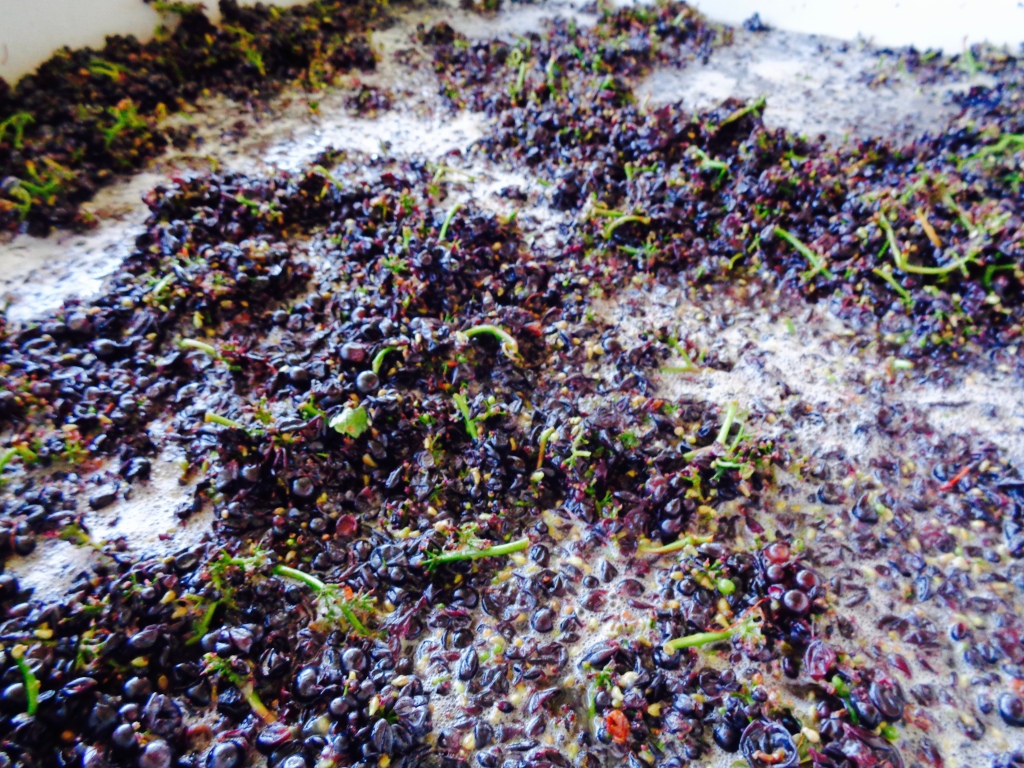
Q: How did the estate fruit do this year?
A: We had the best harvest on the estate that I think we’ve ever had! Just awesome! The way that ’17 and ’18 kinda set that all up – good vintages with normal rainfall and then this last winter was 150% rainfall – so the vines are feeling really good. A normal winter!
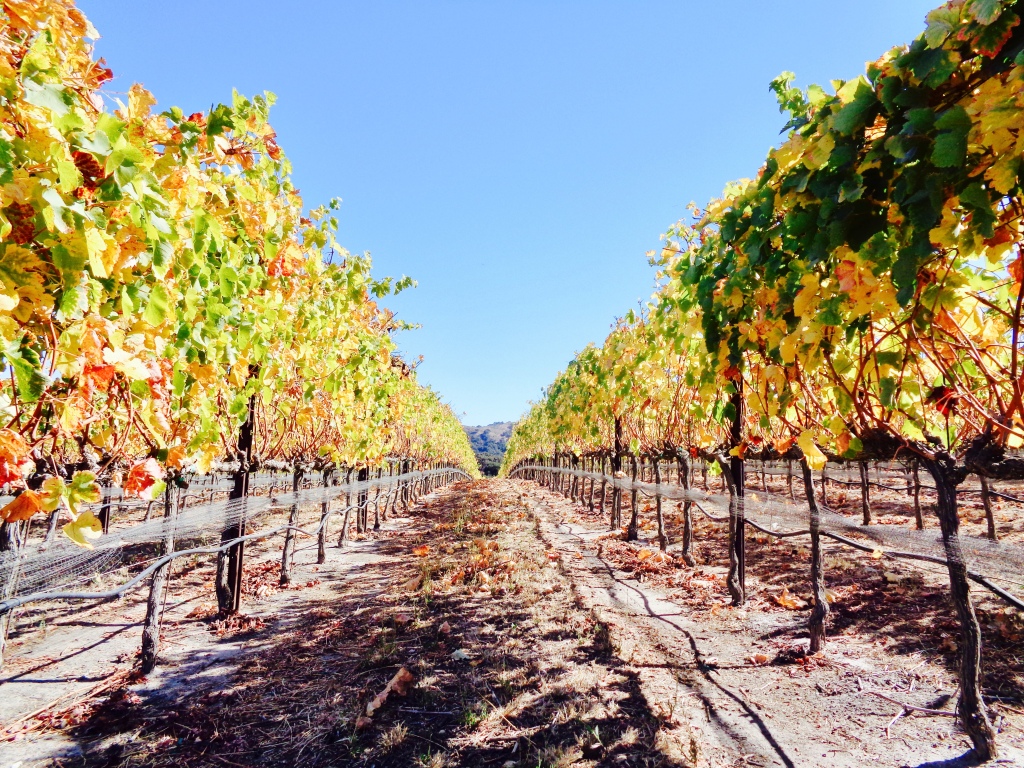
Q: Any standouts?
A: The Old Vine Cabernet Franc and Old Vine Syrah. We started to separate out the Syrah in ’16 and the Cabernet Franc in ’17 and those will be released at some point. The young vines are producing more since they’re now 12 years old. We got almost 10 tons from those two and about 3 tons to the acre average on the estate. For dry-farmed fruit that’s great!
SAMPLING OUR DRY-FARMED TINAQUAIC CHARDONNAY BEFORE HARVEST!

Foxen’s dry-farmed Tinaquaic Vineyard is home to our estate Chardonnay, Syrah and Cabernet Franc.

The Chardonnay portion is made up two different clone varieties – Wente and Clone 4. Wente are typically smaller clusters, while Clone 4 are bigger and more acidic. The Clone 4 block is Chardonnay grafted to Merlot rootstock!

Yesterday, Billy took samples of our Chardonnay for testing and tasting before harvest in a week or two.
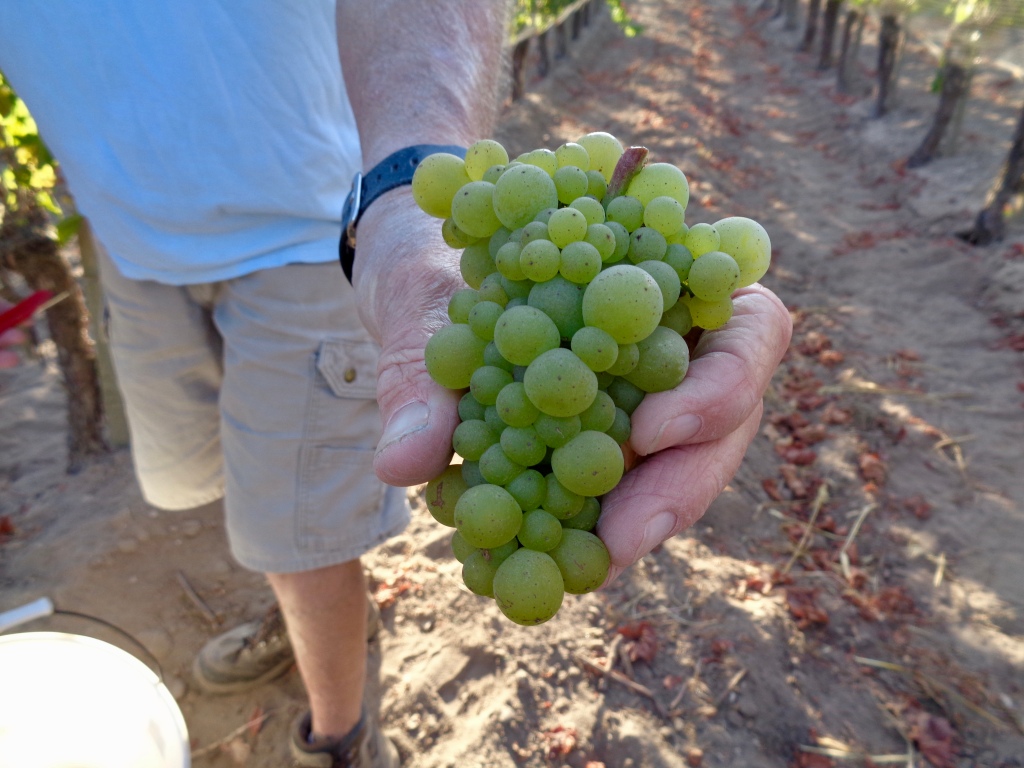
“Hens and chicks!”
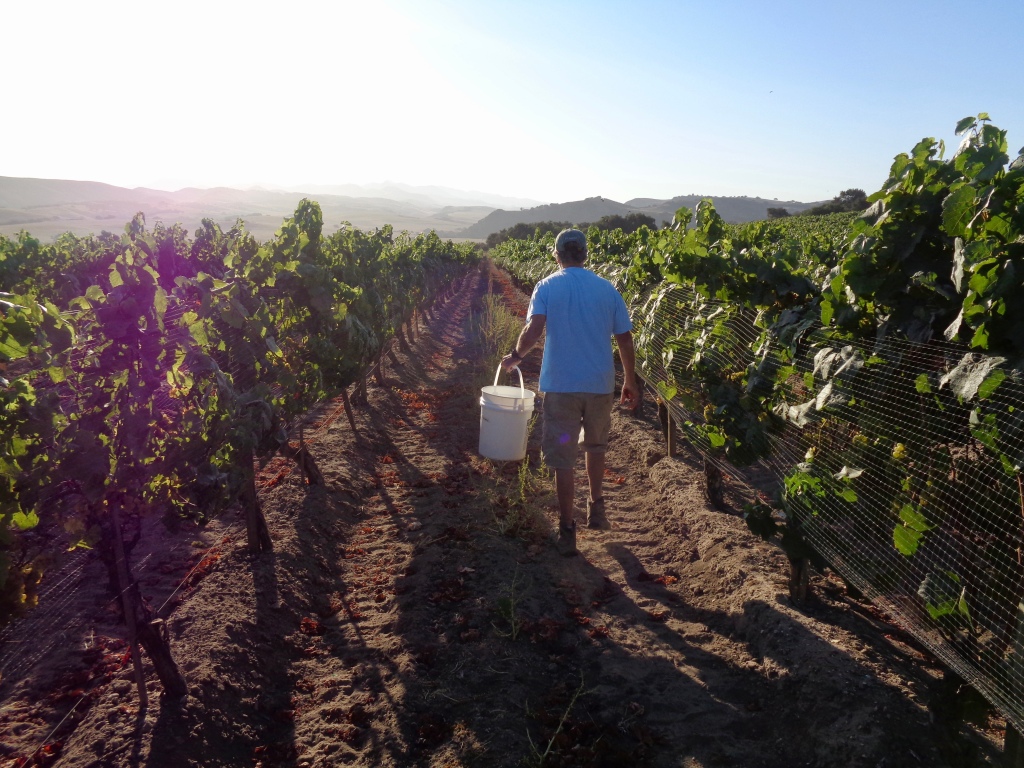
“It’s looking like a huge crop this year! Pretty healthy for no irrigation! Haven’t seen one like this since the ’90’s!” – Billy
HARVEST 2019 IS HERE!!

“We started harvest today, August 30th, with Swan clone Pinot Noir from Riverbench Vineyard for our first ever rosé of Pinot Noir – a few days ahead of my prediction (between September 5th and the 10th). We pick rosé a little bit earlier than normal, so I feel really good about how we’ve viewed the harvest so far.”
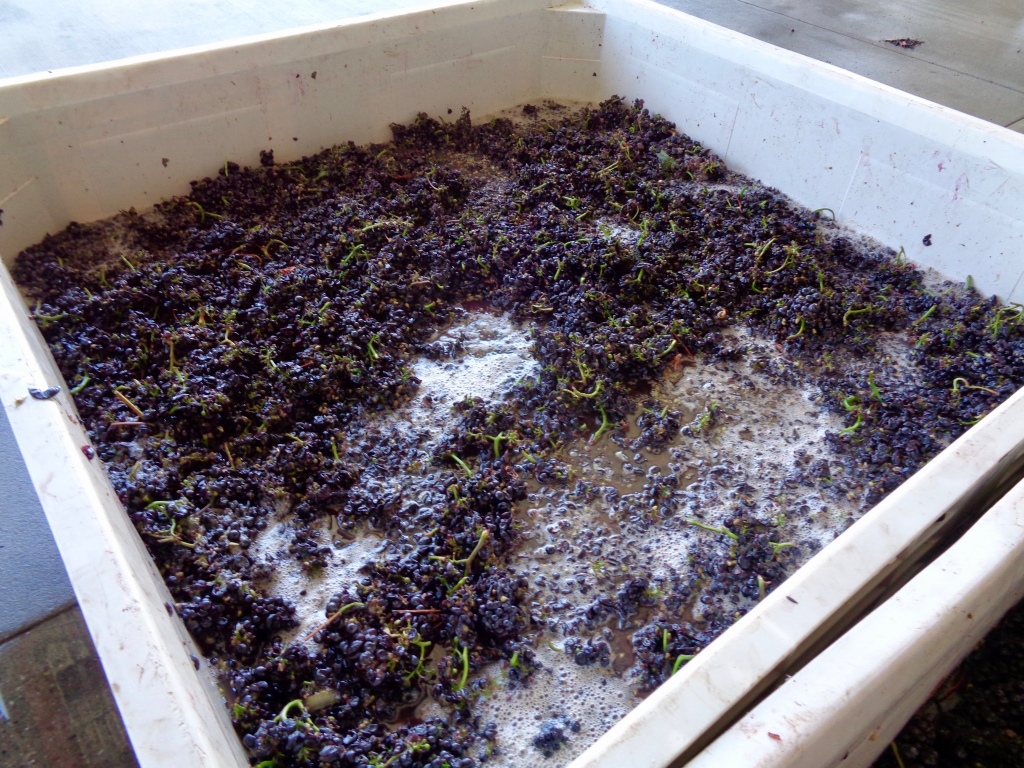


“The table’s set and it looks really pretty! Hopefully, there’ll be no bull in the china shop to ruin the table! Weather’s looking great. Knock on wood, things look really good!” – Billy
OUR STAFF NAME THEIR FAVORITE FOXEN WINES!


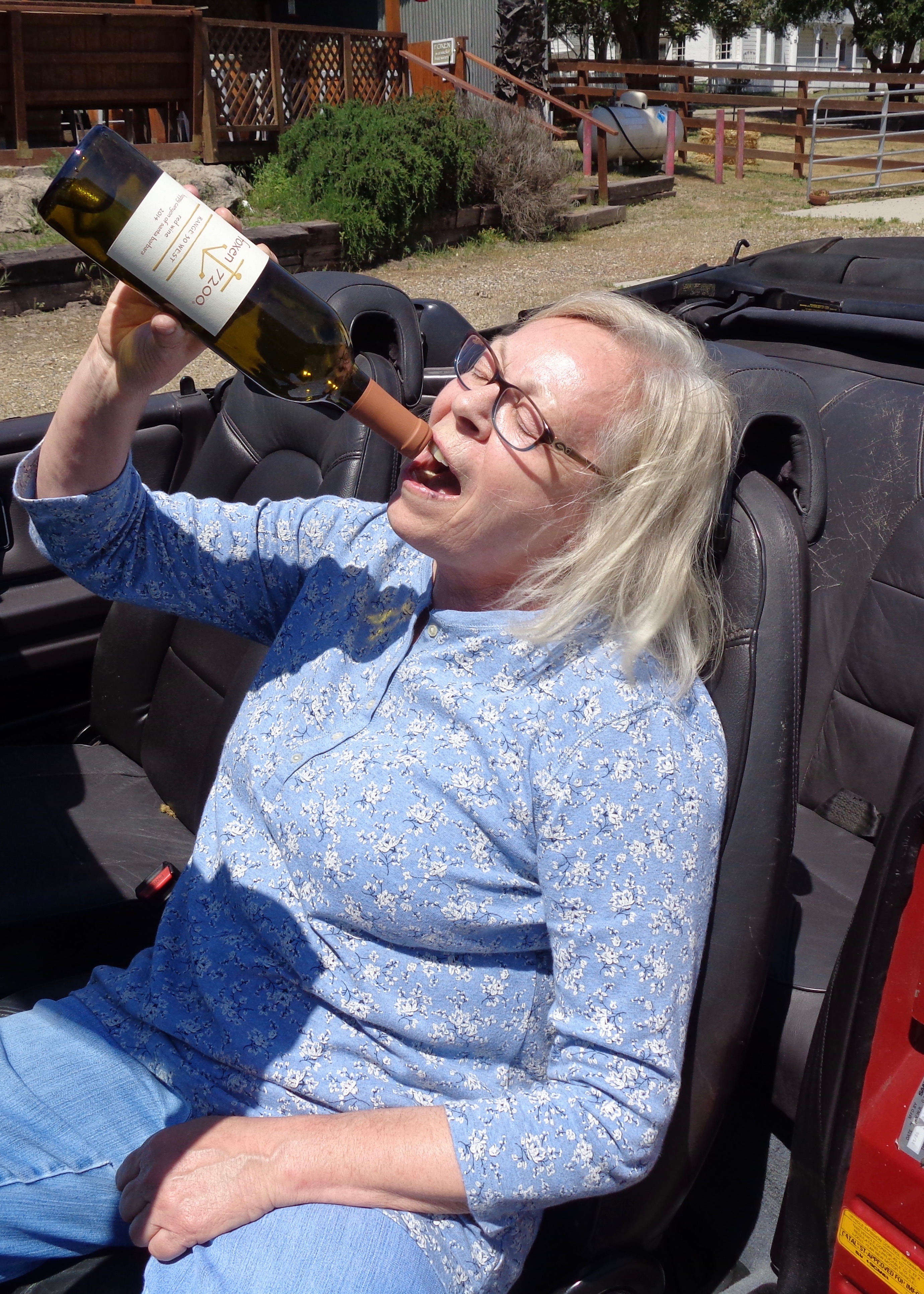

Foxen owner Dick Doré tells the stories behind our vintage Clubhouse photos!
THE CLUBHOUSE WILL BE CLOSED THIS SATURDAY FOR AN EVENT. TO TIDE YOU OVER UNTIL NEXT WEEK, HERE’S FOXEN OWNER DICK DORÉ TELLING THE STORIES BEHIND OUR VINTAGE CLUBHOUSE PHOTOS!
“These pictures were all taken circa 1910 through 1950 by my grandmother on her box Brownie. She developed all these pictures and I was lucky enough to find the negatives and started going through and saving them.”

“This first one was probably the poorest-saved negative, but it’s a great picture. It’s my great uncle Ernesto Wickenden – the namesake of the vineyard of our Chenin Blanc. He was a polo player – probably one of the greatest that ever came out of America. He was a ten-goaler which was like being a baseball player that hits .500.”

“As I grew up here on the ranch in the late forties-early fifties, this is the way we used to handle our cattle. They were all roped and taken down, branded and earmarked and that was the procedure. This particular photo has my grandfather branding and one of the old veterinarians here who would come out and vaccinate the cattle when they were incapacitated like this. It’s very synonymous with the early days of California ranching.”

“This crazy little photo here is of my mother Margery and my uncle Winston on a pet donkey that used to be here that obviously needed a pedicure. The fellow behind was Salitelle Gonzalez, who worked here for fifty years. He came here when he was fourteen and quit working when he was sixty five.”

“My grandfather John Richard Wickenden on his horse, Cyclone, taken down the road a little bit on the hill. He was quite a rancher and ran a lot of cattle here for almost forty years. He was really quite a horseman.”

“This last picture is my grandfather again and my mother and uncle are in the front seat. My grandpa was very proud of his first Cadillac that he bought in 1910. He liked to show it off. In fact, the metal building next to the shack he built particularly because he was afraid of fire with these new fandangled cars that were coming out and he wanted a building next to the road that wouldn’t burn. So he built that tin garage and kept the Caddy in there. He used to drive that car every year during football season all the way up to Berkeley to watch Cal play football – a fourteen-hour drive.”
“So that’s the story of the pictures around here. I’ve got a bunch of other ones too that I’m planning to incorporate also. It’s amazing to see the quality that can be maintained for pictures that were taken 105 years ago.” – Dick
MERLOT IS BACK! Q&A WITH FOXEN OWNER BILLY WATHEN
 Q: When was the last time Foxen did a straight Merlot?
Q: When was the last time Foxen did a straight Merlot?
A: Before the 2016, it must have been the 2006 – also from Vogelzang vineyard in Happy Canyon AVA. Before that, 2001 from Carhartt vineyard. We sourced from Carhartt for quite a few years – when their vineyard was mostly Merlot and a little bit of Syrah. Before they started their own label and they were just farmers.
 Q: How do you feel about it as a varietal?
Q: How do you feel about it as a varietal?
A: You look at Merlot as it sits on the Right Bank in Bordeaux – it’s such an important grape. Especially for the wines of Pomerol and Saint Emilion. Over here, I think the movie Sideways did it some harm, but it’s a great workhorse of a varietal. It’s versatile because it has softer tannins than Cabernet Sauvignon or Cabernet Franc. Not necessarily as thin-skinned as the Pinots but much softer than the other Bordeaux varietals. Merlot also brings that nice, plummy fruit together with whatever we’re blending it with. We use it for five different wines at Foxen – Range 30 West with Cab Franc, Pajarito with Petit Verdot, Volpino and Volpino Rosato with Sangiovese and now the 2016 100% Merlot.
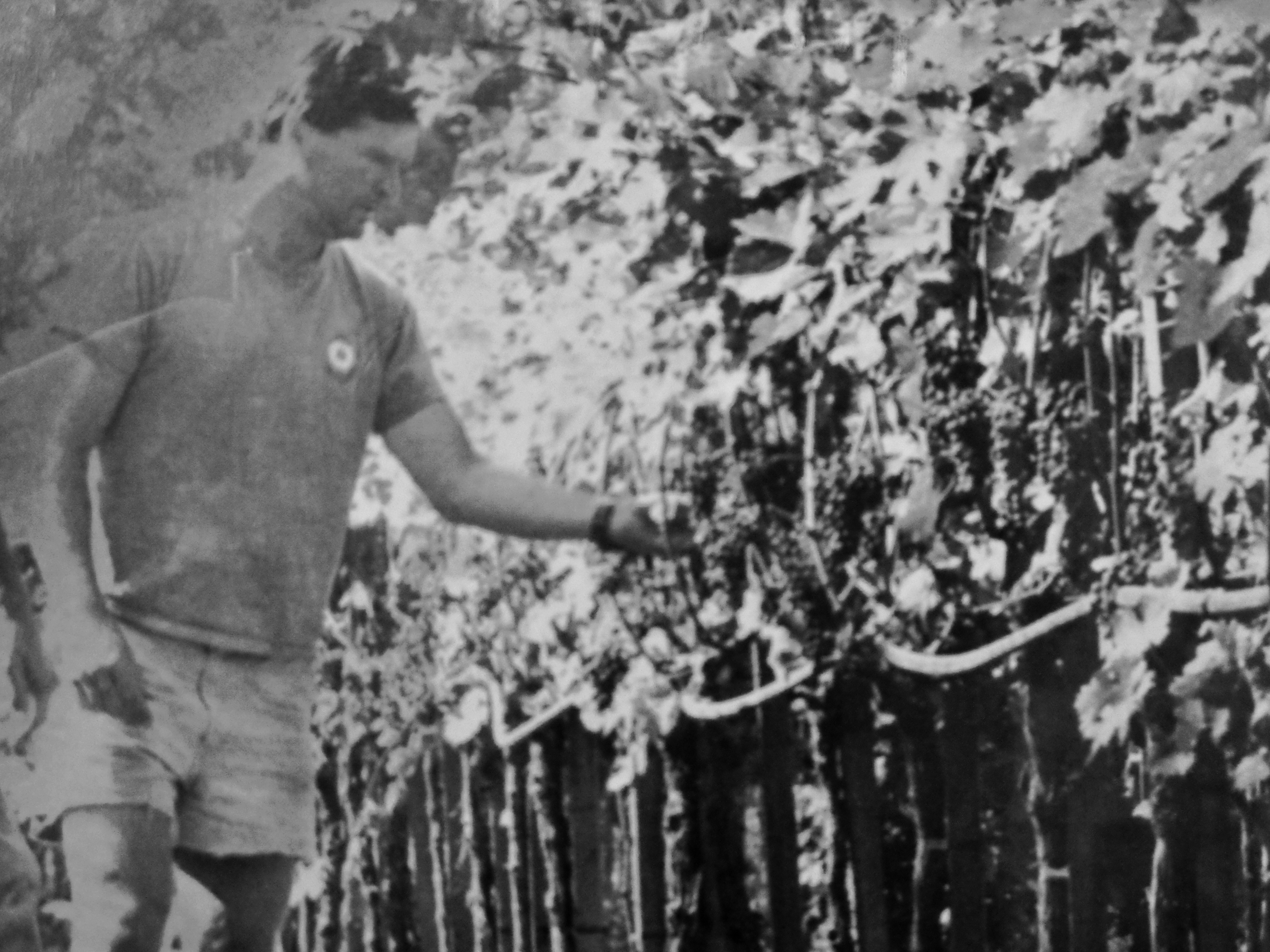 Q: Why 2016?
Q: Why 2016?
A: It was an abundant year. We knew from the get go that we were going to be able to do it so we treated it differently. We used newer barrels to add some spice – the same French Taransaud barrels that the Vogelzang Cab goes into.
 Q: Pairing ideas?
Q: Pairing ideas?
A: Again, it’s versatile. Cheeses, meats, vegetables. It doesn’t have a lot of acidity so I wouldn’t pair it with tomato elements necessarily. It’s all over meat and sauces. Crispy chorizo tacos with some nice sharp cheddar and shredded cabbage.
 Q: Any Sideways anecdotes? Were you at the filming?
Q: Any Sideways anecdotes? Were you at the filming?
A: Yeah, it was awesome! They filmed the scene at the Shack in about 45 minutes. Paul Giamatti is very into wine. He was renting a place here with his family while they were filming so I would run into him occasionally and talk baseball. The crew hung out quite a bit since they were filming elsewhere in the area. When it came out, we saw it in Buellton and everyone in the theater had been around the filming so it was like the Rocky Horror Picture Show. It was nuts.
2018 HARVEST RECAP with winemaker David Whitehair

Q: How did 2018 harvest differ from previous harvests?
A: The main difference as far as the growing season was concerned was that the ’16-’17 season had 23.75 inches of rain compared with 9.85 inches for ’17-’18. Because of that, yields were a little bit lower, but the quality was exceptional. Another big difference was the low-and-slow, later part of the growing season. We had a nice mild beginning of spring, without any high winds, and then there was a heat spike toward the end of July that brought things back up to par. The friendliness of this weather pattern was especially evident in Happy Canyon with the Bordeaux varietals. Typically, when we pick these varietals in their ripe and mature state, they need help with their pH levels. Because of that, you’re usually having to add acidity to the wine to bring it back into balance. This year, we didn’t have to add anything. As the wine’s custodian, the less you have to manipulate anything the better.

Q: What were the biggest challenges?
A: The biggest challenge this year was being patient with the longer harvest. In the previous four or five harvests, we’ve had a narrow window to get everything done. This year was like a huge engine revving up to go nowhere in a hurry. So, stepping back and letting everything happen on a normal timeline was actually a bit difficult. The upside was that we got to spend SO much time with all the ferments. For instance, what I’m emptying right now – the Cabernet Franc from the Tinaquaic Bajita vineyard – was able to ferment for a whole month before going to barrel. Also, with the cooler weather in October, we had no stuck ferments – everything went nice and smooth. For a winemaker, that’s a huge sigh of relief.

Q: How are the estate vineyards doing?
A: The Tinaquaic Alta vineyard is doing surprisingly well. We’re getting two and a half tons to the acre of dry-farmed Chardonnay! I’m convinced there’s an aquifer under it somewhere – either that or it’s a miracle. Tinaquaic Bajita is also doing great thanks to a new well. During the heat spell, we were able to give that little bit of water to the vines to keep wilting to a minimum. We’re starting in with some watering now as well to get a head start on next year’s crop. Should have even bigger buds and thicker canes because of it. As soon as we get some rain, we’re going to disc and plant nitrogen-fixing cover crops in both vineyards to keep things as sustainable as possible.
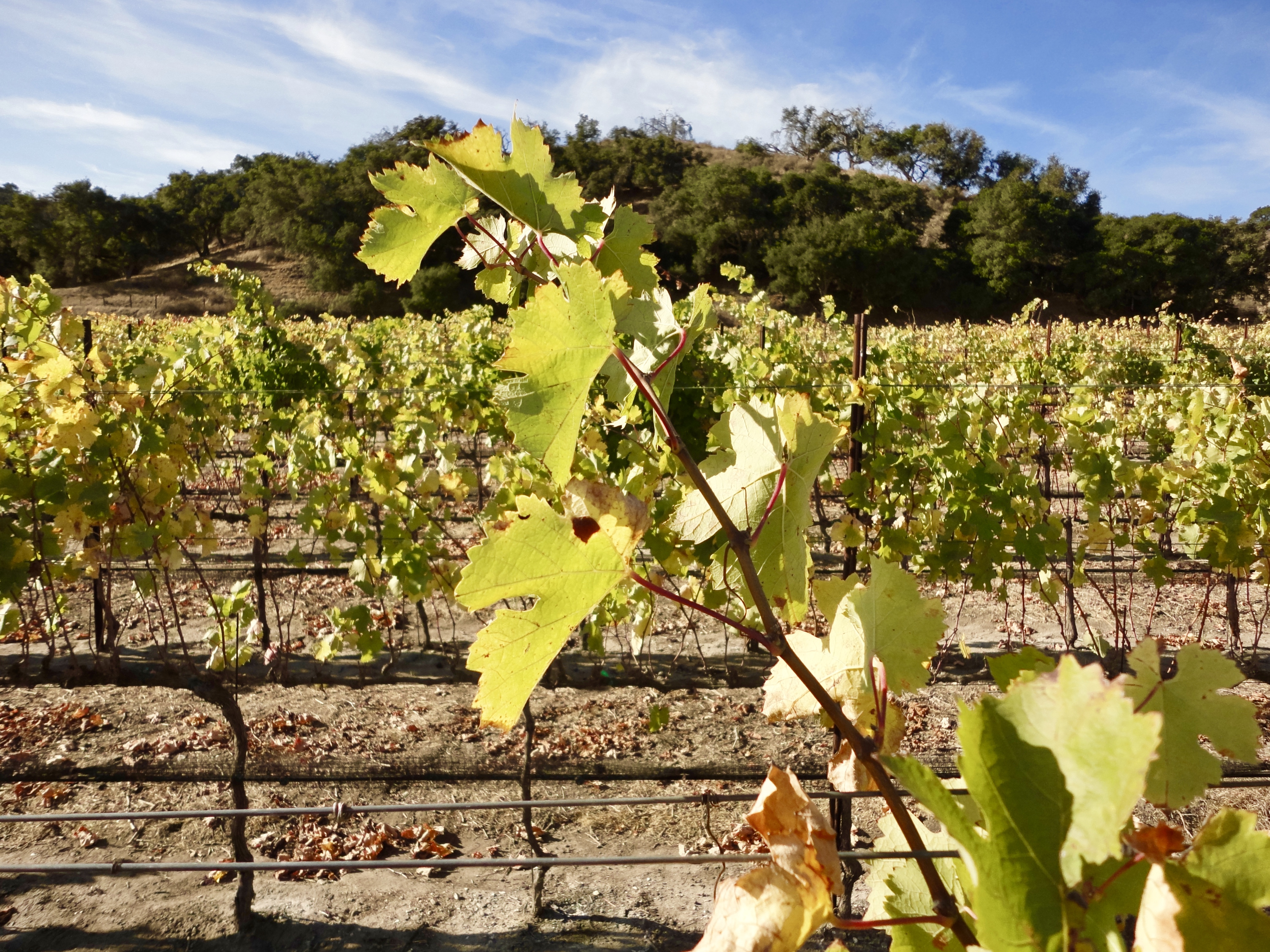
Q: Final thoughts on the 2018 harvest?
A: I think 2018 is going to be known across the board as being one of the most spectacular harvests that California – especially the Central Coast – has seen in a long time.

Black Lives Matter
Posted on June 16, 2020 Leave a Comment

Black lives matter. This statement deserves to be repeated until it is not needed—and unfortunately, it is still needed. Like millions of you across America and the world, we have been heart-broken and sickened by the latest examples of gut-wrenching brutality towards unarmed black Americans. How could we not be?
Clearly America is failing black Americans. While they make up 25 percent of COVID-19 deaths to date, black Americans represent only 13 percent of our total population. Black people are incarcerated at more than five times the rate of white people. And black women are more that twice as likely to die from pregnancy-related causes than white women.
FOXEN stands in solidarity with our black colleagues, friends, family, and communities of color. We know that confronting systemic racism requires far more than a pledge or issuing a statement that we are against racism. Clearly, we must take a more active role as anti-racists. We also recognize that this is only a start.
If you find yourself wondering how you can help, beyond or in addition to joining demonstrations around the country, we have a few organizations where you might learn more and consider making a donation:
• Black Lives Matter Global Network – fights for racial liberation and justice. www.Blacklivesmatter.com, #blm• National Police Accountability Project, a nonprofit project of the National Lawyers Guild, that works to protect the civil rights in people’s interactions with law enforcement. www.nlg-npap.org
• The NAACP Legal Defense and Educational Fund is America’s foremost legal organization on fighting for racial justice. www.naacpldf.org
• Southern Poverty Law Center, who’s motto is: fighting hate, teaching tolerance, seeking justice. www.splcenter.org, #splc
We’d like to end this with two quotes that have recently inspired us: from author Ijeoma Oluo (So, You Want to Talk About Race), and from our dear friend and amazing wine professional Paul Whitely.
“The beauty of anti-racism is that you don’t have to pretend to be free of racism to be an anti-racist. Anti-racism is the commitment to fight racism wherever you find it, including in yourself. And it’s the only way forward.”- Ijeoma Oluo
“IN ITS STRUGGLE TO SURVIVE, A GRAPVINE’S ROOTS WILL GO DEEP AND WIDE TO FIND WATER. IN DOING SO, IT MAY PRODUCE BETTER FRUIT.AS A MATTER OF SURVIVAL, WE MUST GO DEEP TO ROOT OUT RACISM. IN DOING SO, WE MAY PRODUCE A BETTER SOCIETY. BE A PART OF THE STRUGGLE!”–PAUL WHITELY, #PAULTHEWINEFREAK













